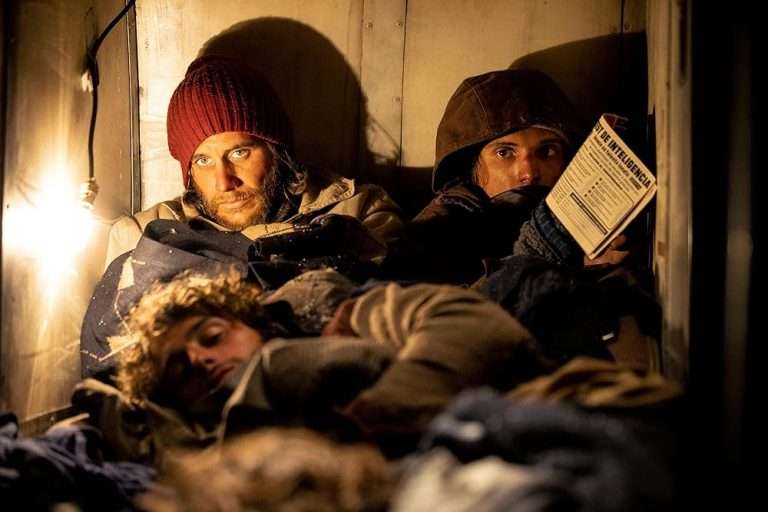Rosemary’s Baby (1968) Movie Essay: When it comes to the portrayal of women as monsters in modern horror films, we find how their monstrosity is defined mostly in relation to their reproductive systems. Whether it is the mother as the possessed body (Conjuring, 2013) or the mother as the castrator (Psycho, 1960) or the mother without maternal predilections (Babadook, 2014), or the unscrupulous primordial mother (Aliens, 1986), it is interesting how popular culture situates female monstrosity within the scope of motherhood.
That what is radically different from us, is a monster. This sense of difference forms the basis of our understanding of what is monstrous. By being an aberration, which challenges common sense and the normal order of things, the monster escapes easy categorization, for example, it can be neither dead nor alive (zombies), neither human nor animal (werewolves). Like monsters, the incoherent distortion of female bodies during pregnancy and following parturition resist attempts of classification.
The sudden bloating of the stomach, the increasing feeling of nausea, the growing alienation between the self and its perception of the body in the mirror, the sensation of being the host to an almost parasitic creature feeding on her, the constant fear of giving birth to a deformed baby, are few out of many misgivings and contradictions that mark the woman’s journey towards attaining motherhood.
As we understand it, there are multiple ruptures in the structure of motherhood, through which fear, paranoia, susceptibility, anxiety, desire, and a sense of abject powerlessness infiltrates. This interstitial state of being suspended between categories that threaten to destabilize distinctions is perhaps what makes mothers such great monsters in popular cinema.
Recommended Read: 10 Best Films of Roman Polański
The parochial practice of romanticizing motherhood at the cost of rendering the experiential reality of mothers reductive has long been challenged by the horror film genre. While most films link horror with the female body by focusing on the number of ways in which the body manifests grotesqueness, very few manage to deliver terror without so much as dislocating a limb. Roman Polanski’s cult horror film Rosemary’s Baby (1968), based on Ira Levin’s 1967 novel of the same title, belongs to the second category. The film, besides exploring the experience of motherhood as a metaphysical journey deep into the existential darkness of being where the mother is forced to face the monster within, also takes a terrifying peek into the ‘womb’ as a site of patriarchal experimentation.
Rosemary’s Baby (1968) tells the story of newlyweds Rosemary and Guy Wodehouse (Mia Farrow and John Cassavetes), who rent an ill-reputed Victorian high-rise apartment in Bramford. Guy is an actor, impatient for his big break, and Rosemary is the typical homemaker bent on raising a family and being Guy’s ‘perfect wife.’ Things start to go awry when their bizarre neighbors, old Roman and Minnie Castevet (Sidney Blackmer and Ruth Gordon), begin to micro-manage the couple’s life.
At first, Guy condemns this lack of privacy, and Rosemary coaxes him to socialize. But after a dinner, where the Castevets claim to have a certain influence in the theatre world, Guy becomes obsessed with befriending them. What follows is a tantalizing tale of how patriarchal forces colonize Rosemary’s body and exploit her womb as a conduit through which horror is to be unleashed into an orderly world.
In one of the film’s most powerful scenes, Rosemary is shown having a nightmare where she finds herself lying naked on a bed, tied and gagged. Faces surround her, and she thinks she can spot Guy, Roman, and Minnie. Just as she tries to make sense of it all, demonic presence mounts and rapes her. The next morning Rosemary wakes up with a throbbing and bruised body. Guy explains that since he did not want to miss ‘baby night,’ he has had intercourse with Rosemary while she had passed out the night before. The discursive quality of this particular scene can be contextualized at multiple levels.
For instance, many critics have pointed out that the scene can be read as a parodic subversion of the Christian theory that God impregnated the Virgin Mary by the Immaculate Conception method because, unlike God, here Satan rapes Rosemary. This single criticism problematizes the politics of consent and raises the pertinent question: are women in charge of their birthrights? What the Bible justifies as ‘holy,’ Rosemary’s Baby exposes as a violation of a woman’s sexual and reproductive rights.
The ingenuity of this film lies in its ability to strike a fine balance between passive victimhood and subtle assertion of agency. From the outset, the director develops Rosemary’s character arc deliberately against the set template of the Victorian feminine ideal, i.e., a heroine who is naïve, passive, and repressed. But in the end, the tables are turned on the very forces of patriarchy that have been manipulating Rosemary all this while and, just like us (the audience), have taken the mother for nothing more than a child-bearer. This sudden disruption of her character arc exposes a subtext that engages with the idea that when it comes to restraining the horror that a phallocentric society has given birth to, it is the woman who takes the final call.
However, unlike most films, the mother does not purge out the horror or stem it out completely with the ‘hysterical strength’ only a mother can exhibit to save her child. Rather, Rosemary is shown as taking charge of the very horror that has haunted her right from the beginning. The horror has fed on her, and she has thrived on it. By complicating the role of Rosemary in relation to the idea of monstrosity, i.e., by portraying her as a mother who is neither the monster nor the glorified cause of the monster’s death at the end, we are urged to reconsider our understanding of the link between motherhood and monstrosity.
Such a reading presents the film as a departure from the popular practice of letting the mother/woman win at the film’s end in the name of feminism. Polanski implies through this film that human intentions divested with frailties, affection, memory, and hatred can set forth consequences that are at once terrifyingly monstrous and breathtakingly humane.
Polanski’s deft script has an acquired style that keeps the reader piqued with a dual sensation of fear and desire. With the ominous background score by Krzysztof Komeda, the terror takes on an epiphanic dimension. Especially the lullaby with which the film ends is a masterpiece in itself which beautifully invokes within the spectator a riot of sensations ranging from suspense to fear to melancholia.
Mia Farrow delivers a performance whose staggering simplicity near about transfixes the spectator. Ricocheting endlessly between gullibility and paranoia, Farrow brings to life the hysteria of a would-be mother who can never worry enough whether the baby will come out ‘perfect.’ Such finesse in cinematography is something you rarely come across.
The thematic depth of the film still makes it a critic’s favorite pick. The most striking feature of this cinema is how it manages to ensconce the spectator deep within the framework of the horror without soaking up the screen with blood, gore, and unnecessary sex scenes. When it comes to discussing horror movies, one can broadly classify them into two categories based on the cinematic experience.
The first category includes films that jump at you outright and devour you in an instant, whereas the second category consists of movies that take root inside your mind and keep on gnawing at your consciousness long after you have left the theatre. Rosemary’s Baby (1968) is one such film.


![They Live [1988]: A Biting Satire On Modern Society](https://79468c92.delivery.rocketcdn.me/wp-content/uploads/2017/08/They-Live-768x432.jpg)


![Frances Ha [2012] Review: Revisiting an Old School Tale of ‘Modern Love’](https://79468c92.delivery.rocketcdn.me/wp-content/uploads/2020/10/Frances-Ha-768x432.jpg)
